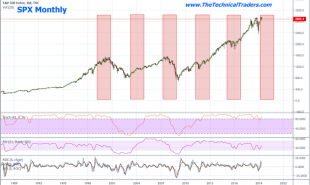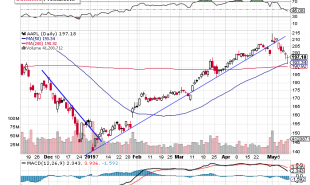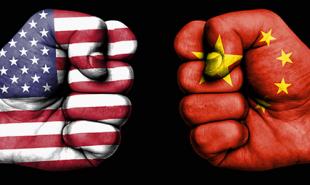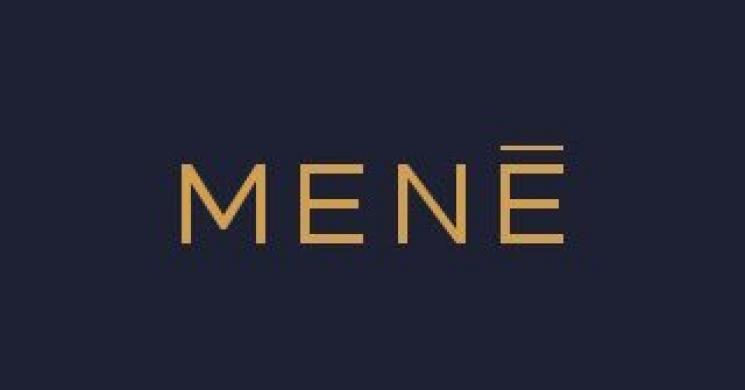
By: Roy Sebag Founder and CEO of BitGold, GoldMoney, and now, Menē Website: www.mene.com TSX-V: MENE
Gold
Gold has fascinated the human imagination from time immemorial. Since at least the advent of writing, humans and human cooperative systems–which is to say “economies”–have revered and valued gold for its natural scarcity, its beauty, and its elemental properties. The codes of Ur-Nammu and Hammurabi, the earliest extant examples of human writing, which come from Sumer and date to about 4000 BCE, both enforce (and indeed equate) human justice, equity, and egalitarianism with standard weights of gold. In the Book of Genesis, we are told that the first head of the river flowing out of the Garden of Eden went to Havilah, “where there is gold; and the gold in that land is good.” The Greeks envied the Persians for having such vast quantities of it, and Herodotus writes with lengthy fascination about the role it played in virtually all aspects of Egyptian life. Through the writings of Hesiod and Plato, Virgil and Ovid, both the Greeks and the Romans came to believe that human history began in an utopian “golden age,” and that human history endured through subsequent ages of incrementally lower value in terms of the metal that corresponded to them...the golden age turned into the silver one, the silver age turned into the bronze one, the bronze age turned into the iron one. Qualitative assessments of human affairs notwithstanding, there is something fascinating about the Greco-Roman observation that, with time, the purity of the metal that characterizes the age has a way of growing increasingly debased.
'By combining innovative technology, timeless design, and radical transparency, we are restoring the link between jewelry and savings. ' Roy Sebag, Menē Founder and CEO
We can see this phenomenon play out clearly in the present age as it relates to world currencies. Since 1971, when Richard Nixon officially (albeit ostensibly temporarily) took the United States off the gold standard, fiat currencies have ascended not just in the United States but on the global stage as well. This is a striking deviation from the way in which human societies have conceptualized money across the globe for the whole of known history. Since at least the time of Hammurabi and Ur-Nammu, money was always understood to be a standard weight of precious metal—usually gold and sometimes silver. With the course of time, human civilizations have introduced various innovations to make monetary exchanges more efficient. The coin of the realm, for example, represented a practical means by which to quickly exchange these standard weights of precious metal, but the form of the coin itself was always meant to be the physical signifier of the standard weight of gold which it signified. Bank notes, in turn, were intended as a further practical (in this case lightweight) abstraction of these standard weights, but the paper was never meant to be money itself. Even fiat currencies prior to 1971, Yuan Dynasty banknotes dating to about 1000 CE being the earliest known example, had some representative function of their basis in precious metals.
Trust
With the 1971 transition to paper (and now digital) monies, invented out of thin air, and based on nothing more than notoriously mercurial public “trust,” we have borne witness to unprecedentedly severe market volatility and relentless, frequent, and devastating cycles of inflation, recession, and depression. It was in recognition of these symptoms of the historically unprecedented divorce of “money” from the precious metals that had always constituted it, and in the midst of the early, giddy rise of cryptocurrencies, that, in 2014, I launched BitGold. I conceptualized BitGold as electronically accessible gold, bringing all the convenience and innovation that was then happening in fiat and digital currencies to the one commodity money that has passed all tests of time. In the fullness of time, I have grown BitGold into Goldmoney, a TSX-traded public company with an international presence, over $500 million in annual revenue, and custody over $1.7 billion in precious metal assets. Goldmoney now complements my gold-backed cryptocurrency concept with all of the amenities of a full-service bank—including a state-of-the-art online platform, elegant brick-and-mortar branches in cities across the globe, pension and savings plans, business solutions, and the capability for our clients to trade directly in gold, silver, platinum, and palladium bullion.
'Menē has become one of the most successful jewelry brands to launch in recent years, having changed the way consumers around the world think about jewelry – shifting attitudes towards the purchase of jewelry from a discretionary item to a precious metal investment that retains most of its original purchase value.' Roy Sebag, Menē Founder and CEO
Growing Goldmoney has afforded me the opportunity to learn a great deal about precious metals, offering me a unique perspective on the market. One of the major things I have discovered is that just as monies have grown increasingly debased as they have deviated from (and have now broken completely with) a basis in precious metals, jewelry, in the western world, has exhibited a parallel process of debasement. This discovery began in 2016, when I spent three weeks in India and China with Josh Crumb—with whom I co-founded Goldmoney. In the east, we spent an extensive amount of time studying local gold jewelry markets, visiting factories, markets, dealers, manufacturers, and financial firms involved in gold jewelry finance. What we discovered was that the concept of “jewelry” in the east was vastly different than it is in the west. In the most basic sense, jewelry in the east is overwhelmingly made from either 24-karat pure (99.99%) or 22-karat (92%) gold. This stands in striking contradistinction to the way jewelry is made in the west, where I have never seen a jeweller sell an item with a purity in excess of 18-karats (75%), and, more often than not, the purity of the precious metal in jewelry is much lower than even that. What this means is that jewelry in the east is really a vehicle for pure gold ownership, with a sophisticated economy around it, including financing, lending, and layaway firms. This economy services an estimated $2 trillion in jewelry owned by an estimated 2 billion people in China and India alone. Far-reaching and resulting from thousands of years of evolution, this decentralized jewelry economy possesses an impressive integrity. No matter where we traveled or which jeweler, manufacturer, or lender we visited, this pure gold jewelry was always bought or sold using the following simple formula: [(Purity of Gold) x (Weight of Gold) x (Daily Market Value of Gold)] + 7-10% markup for design. Regardless of purchaser, this clear formula resulted in a condition wherein the consumer clearly understood that he or she was not merely buying jewelry, but was truly acquiring gold.
Passion and Innovation
I am a passionate student of history, and my personal belief that there is nothing new under the sun has been a guiding principle of my business ethos throughout my career. This principle has informed my experience investing in stocks and running my own hedge fund at the beginning and continues to serve as the impetus for my transition into the precious metal markets with BitGold and Goldmoney today. What I discovered in the east resonates with the lessons that history teaches us. As I mentioned at the beginning of this piece, the earliest surviving examples of human writing are the Codes of Hammurabi and Ur-Nammu. In both codes, standardized units of weight–the menē or mina–are the basis on which crimes are rectified, debts are settled, and social justice is achieved. It is crucial to understand that the menē is not a representative monetary unit but rather the monetary end in and of itself. The subject of King Ur-Nammu or King Hammurabi, being called upon by his justices to answer for a crime or pay a debt, could do so by putting a pure gold coin on the balance scale just as he or she could do so by breaking apart a piece pure gold jewelry and putting it on the balance scale as well. What mattered was not so much the form of the gold, but the function of its purity as understood and measured in terms of its weight.
It is in this knowledge that I have founded Menē, a spinoff of Goldmoney that recently went public under the symbol “MENE” on the TSX Venture on November 6th. Menēcrafts 24 karat gold and platinum investment jewelry™ sold by gram weight. By combining innovative technology, timeless design, and radical transparency, we are restoring the link between jewelry and savings. To achieve this mission, Menē is guided by three principles. The first is that our jewelry is crafted from pure 24 karat gold and platinum with no diamonds or gemstones. This means our jewelry is a timeless physical object that will never tarnish (unlike man-made chemical alloys of 18 karats or less). It also means that simply weighing Menē jewelry will always unveil its objective value. Our second principle is that Menē jewelry is sold by the gold and platinum weight value, pursuant to the ancient formula we discovered in the east, plus a transparent design and manufacturing premium. This premium is roughly 20% of the precious metal’s daily value. The Result is that a $500 Menē ring will have at least $400 in gold or platinum value at the time of purchase while $100 is the revenue earned by Menē. Our third and final principle is that Menē provides a lifetime guarantee to buy back or exchange any authentic Menē jewelry at the prevailing gold and platinum prices minus a 10% fee.
Picasso
In addition to the fiscal soundness of Menē, timeless aesthetics are delivered by Diana Picasso, our Co-Founder and Chief Artistic Officer, and Sunjoo Moon, our Creative Director. Together, Sunjoo and Diana have designed a formidable and growing collection of nearly 1,000 SKU’s all in just two years highlighting the savoir-faire and creative spirit inherent to our brand. This design team is also growing both within our company and through external joint ventures and capsule collections. This coming year we will be unveiling a few such important limited edition collaborations. The design aspect of the Menē value proposition is compelling as our customers enjoy this quality of our brand for a nominal design fee that is significantly lower than any of our competitors. This combination of design excellence, unique technology, and radical transparency has led Menē to become a rather well-known brand within the global fashion and luxury market in near record time. In less than 10 months, we have registered over 3,000 independent customer reviews (mene.com/reviews), received a full feature in the New York Times, and were predicted by Vogue to “revolutionize the gold jewelry business”.
Disruptive Concept
Beyond the concept and the brand, Menē represents a prodigious business opportunity. The global jewelry industry is valued at nearly $300 billion annually, making it one of the largest industries in the world. The online market for jewelry is growing rapidly, recently reaching $17 billion or 6% of the total market size in 2017. This figure is projected to grow to $30.4 billion in in 2023. As an internet-based company with a unique online platform, Menē is poised to rapidly capture market share in the existing jewelry market whilst growing the size of the market in the West by changing the paradigm from discretionary jewelry purchases to precious metal investment. Whereas in the East, around 90% of the $150 billion of jewelry sold annually can be attributed to the actual precious metal value found in the items of jewelry, in the West, only 10% of the $150 billion of jewelry sold annually has any lasting precious metal value. This means that Menē is a profoundly disruptive concept in the western jewelry market, representing a real long-term threat for brands like Tiffany and Cartier that rely on a business model which effectively generates 600-2,000% markups by devaluing the precious metal in their jewelry through processes of unnatural, man-made alloying (no, 18k is not how gold is found in nature) while adding subjective value to their products through the use of combustible, carbon-based gemstones and opaque pricing models (yes, diamonds will burn like charcoal). In my own personal journey of inquiry, I have found that most of this ancient wisdom about what jewelry is and what it is not has not necessarily been lost as much as it has been purposely obfuscated by luxury jewelry brands in the recent past to enhance their margins and earnings power. Only 80 years ago, Charles Tiffany advertised silver jewelry for sale in the New York Times by ounce weight. Today, when asked, a Tiffany store will not even disclose the weight of a piece of their jewelry (I implore you to try this exercise the next time you visit) while politely referring you to the “retail price”.
Related
- GoldMoney Founder Is Disrupting The Way We Think About Jewelry
- A Personal Experience of Buying 24K Gold Jewelry Online
- Interview: MENE TSX Debut
Vision
This gulf between the knowledge of the natural order as it relates to jewelry is growing increasingly wider between the East and West and has led to the incredibly rich and, in my view, unsustainable margins realized by western luxury brands. Menē seeks to bridge the gap between east and west, bringing something profoundly lacking from global luxury markets: the forgotten role of jewelry as wearable estate—an heirloom as important to family wealth and savings as property, stocks, or works of fine art. Menē seeks to restore the relationship between jewelry and savings, empowering consumers by creating pieces that will endure as a store of value. With Goldmoney, it has always been my vision to return to relevance the weights of precious metals that have always been understood to be, in and of themselves, money. Menē, as a new and exciting extension of that vision, adds form to the utility and function of precious metals as money, just as our ancestors did—jewelry truly worth its weight in gold.
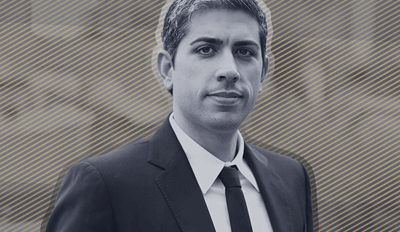
Menē Founder Roy Sebag
Read more by MarketSlant Editor


